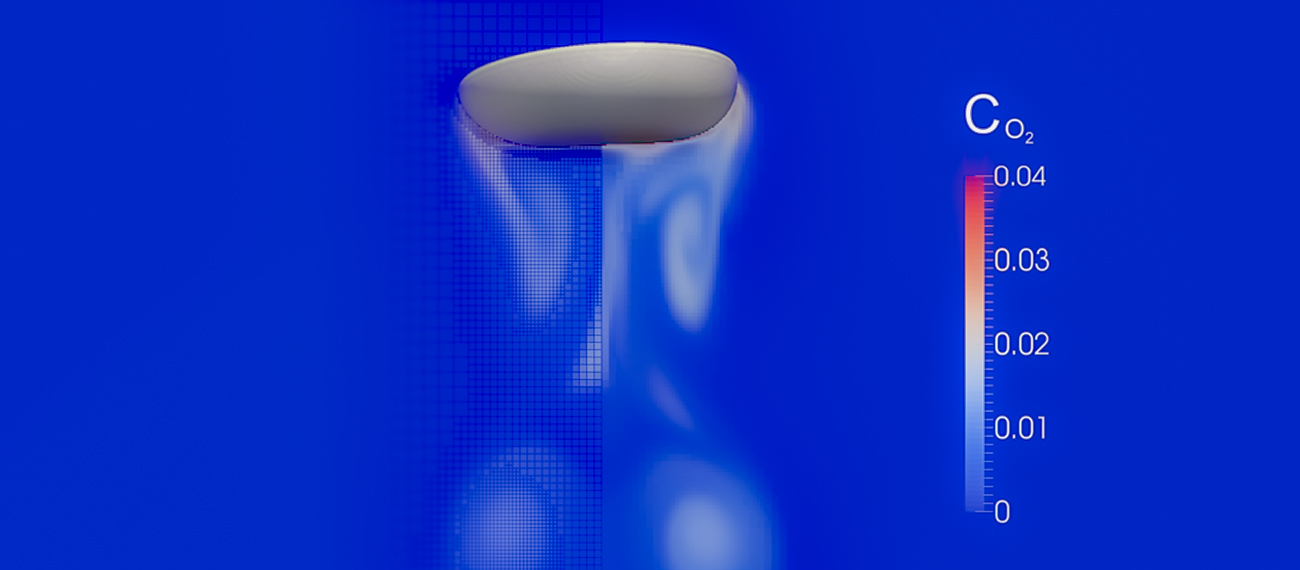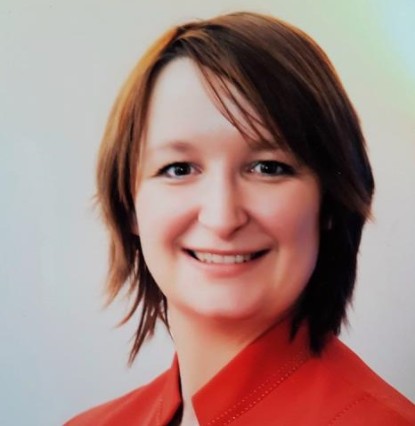Research Topics
- Multiphase Flow
- Complex wetting (surfactants, porous media)
- Interfacial mass transfer including chemical reactions and phase change
- Mutlicomponent transport (miscible systems, electrochemical systems)
Methods
- Sharp & diffuse interface capturing methods
- Moving mesh interface tracking methods
- Fluid-Structure-Interaction
- Adaptive and hybrid approaches
Collaborative research projects
DFG Collaborative Research Centre 1194
Subproject B07: Scale bridging simulation of dynamic wetting based on the phase field method
DFG Collaborative Research Centre Transregio 150
Subproject B08: Numerical simulation of the interaction between a drop and a liquid wall film
DFG Priority Programme 1740
Development and Application of a Direct Numerical Method for Reactive Transport Processes in Bubble Systems
EU H2020 - exaFOAM
Exploitation of Exascale Systems for Open-Source Computational Fluid Dynamics by Mainstream Industry (exaFOAM)
NHR4CES
National High Performance Computing for Computational Engineering Sciences (NHR4CES)
BMBF - Prometh2eus
Project network for optimised material development for technical H2 generation through improved oxygen electrodes
Some impressions of CMF research
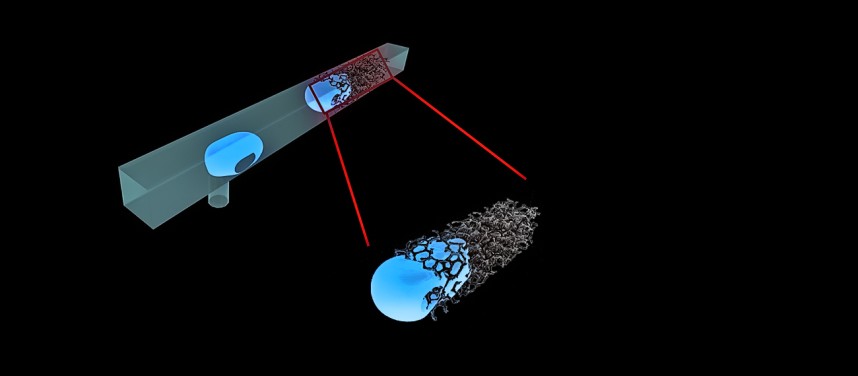
Direct Numerical Simulation of the penetration of Taylor bubbles into the porous foam with bubble capture in front of the porous structure. Joint work with Dr.-Ing. Martin Wörner (Karlsruhe Institute of Technology). Simulations performed with phaseFieldFoam solver and OpenFOAM (FOAM-extend 4.0).
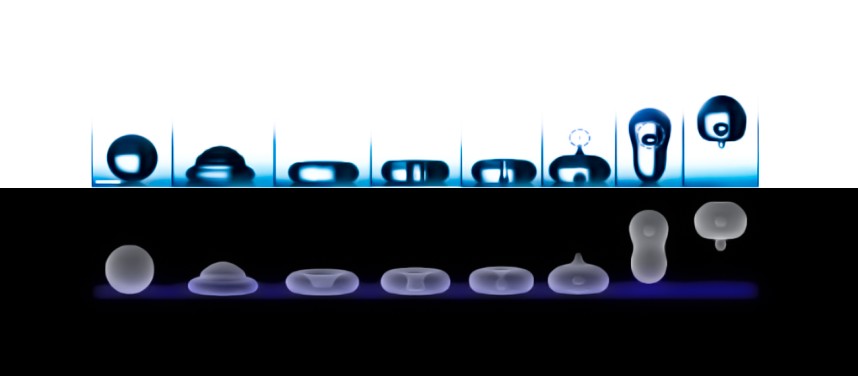
Direct Numerical Simulations (DNS) of droplet rebound. We have been able to accurately reproduce the bubble entrapment behavior. The upper row of subfigures (white scale bar = 1 mm) shows an experiment by Lin et al. (J. Colloid Interf. Sci., 516 (2018) 86-97) while the lower row shows present simulation results using our solver phaseFieldFoam (FOAM-extend). Joint work with Dr. Martin Wörner and Dr. Nima Samkhaniani (KIT, Germany).
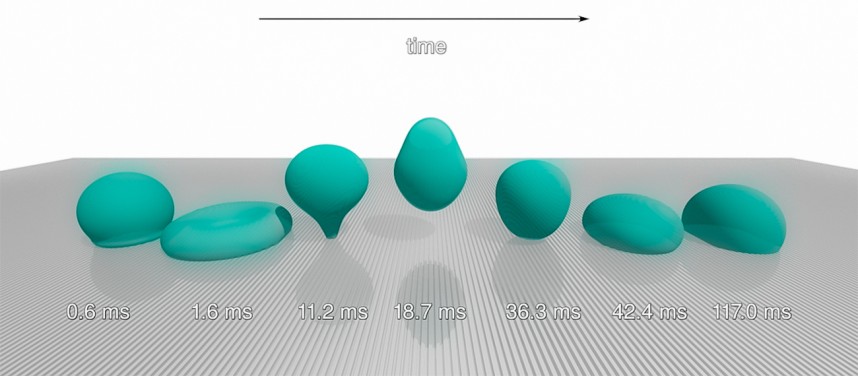
Direct Numerical Simulation of a liquid droplet bouncing at a micro-grooved wall. Joint work with Prof. Dr.-Ing. Bettina Frohnapfel and Dr.-Ing. Martin Wörner (Karlsruhe Institute of Technology). Simulations performed with phaseFieldFoam solver and OpenFOAM. Refer to https://doi.org/10.1016/j.ijheatfluidflow.2018.02.014 for more details.

Direct Numerical Simulation of a single rising air bubble with oxygen transfer across the interface. Simulations have been performed with an enhanced algebraic Volume-Of-Fluid method (based on interFoam) in OpenFOAM, dynamic load balancing (LB) and local dynamic adaptive mesh refinement (AMR) including a multi-criteria refinement strategy. Joint work with Daniel Deising, now with Engys Ltd., and Prof. Dr. rer. nat. Dieter Bothe, Mathematical Modeling and Analysis group at Technische Universität Darmstadt. Refer to https://doi.org/10.1016/j.ces.2015.06.021 and https://doi.org/10.1016/j.compfluid.2018.03.041 for more details.
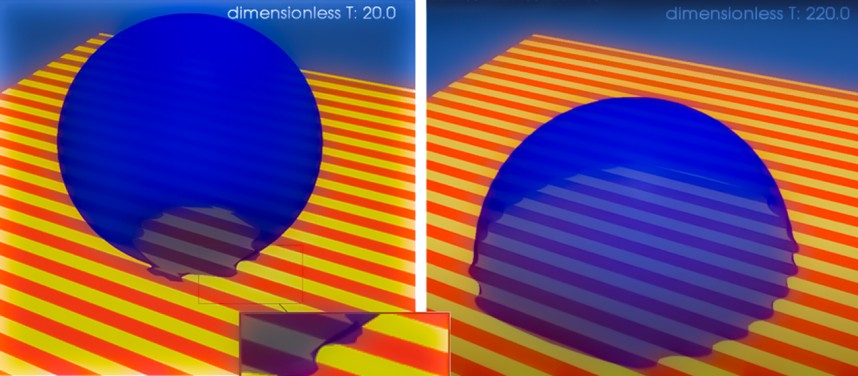
Direct Numerical Simulation (DNS) of a droplet spreading on a chemically patterned substrate (dark stripes with 40°, light stripes: with 110° equilibrium contact angle). Simulations have been performed with phaseFieldFoam in OpenFOAM (Foam-extend 4.0). Joint work with Dr. Martin Wörner (Karlsruhe Institute of Technology) and Dr. Xuan Cai (now with BOSCH). More details under https://doi.org/10.1002/ceat.201500089.

Direct Numerical Simulation of fluid dynamics and interfacial mass transfer in structured packings. Vertical section through three packing elements. Distribution of the volume fraction of the liquid phase (left). Representation of the mixture molar fraction in gas and liquid phase (right). Simulations have been performed in OpenFOAM using an enhanced algebraic Volume-Of-Fluid method (based on interFoam) and the Generalised Continuous-Species-Transfer (GCST) method. Joint work with Daniel Deising, now with Engys Ltd., Simon Hill, Sebastian Rehfeldt, Prof. Harald Klein (TU Munich) and Thomas Acher, Rainer Hoffmann, Johann Ferstl (Linde). Refer to https://doi.org/10.1002/cite.201900041 and https://doi.org/10.1016/j.ces.2015.06.021 for more details.

